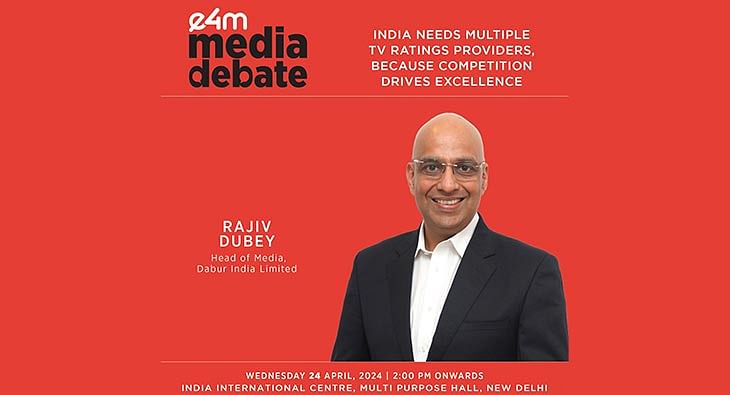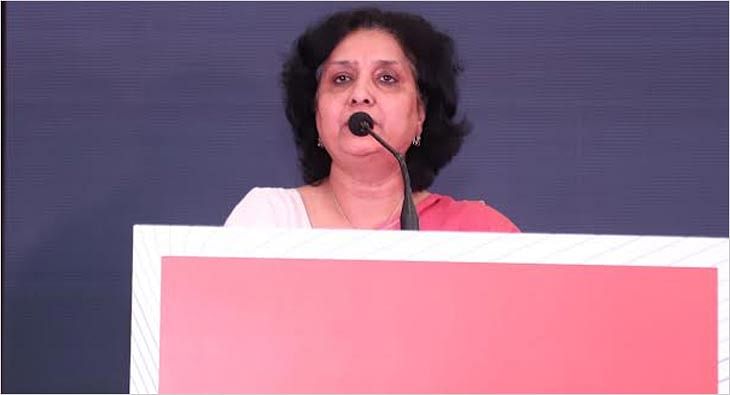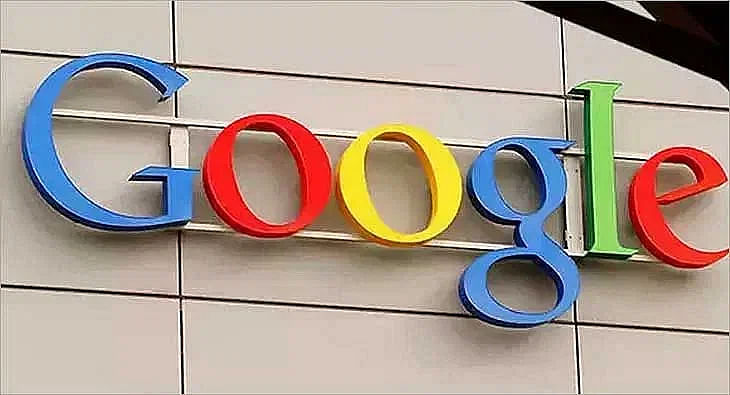Will ‘Bigg Boss 4’ propel Colors to the numero uno spot again?
‘Bigg Boss 4’ premiered on Colors on the day that also saw the grand opening ceremony of the Delhi Commonwealth Games. With quite a few ‘controversial’ house mates and Salman Khan as host, expectations are quite high this time. exchange4media asks media planners about the reality show’s prospects.

‘Bigg Boss 4’ premiered on Colors on October 3, 2010, the day that also saw the grand opening ceremony of the Delhi Commonwealth Games. With quite a few ‘controversial’ house mates and Salman Khan as host, expectations are quite high this time.
The inaugural episode saw host Khan welcoming the 14 participants, who include Abbas Kazmi, the former lawyer of Mumbai terror attacks accused Ajmal Kasab; Begum Nawazish Ali, a popular Pakistani TV show host and a cross-dressing actor; Devinder Singh aka Bunty chor; popular Bhojpuri actor Manoj Tiwari; former dacoit Seema Parihar; Pakistani actor Veena Malik; and TV actor Shweta Tiwari, among others. Already, one of the participants, Bunty chor, has been ousted from the show.
Media planners are positive about the latest season of ‘Bigg Boss’ and are expecting a TVR of 4 to 4.5 for the show.
Sudipto Roy, Principal Partner, Client Leadership, Mindshare, remarked, “Obviously, with any property of this nature, it will do better than last season. Our expectations are high. It is imperative that the show will do well, now that they have Salman on board. Also, they have managed to put an excellent cast with different kinds of people. They have got people from Pakistan as well. From a dacoit to the lawyer who was defending Kasab. There is a lot of variety. It is good that they have not tried to be elitist in their approach, but have touched people from the Hindi heartland. This time it definitely has a capacity to generate engaging content. I believe the stage is set for a very decent run.”
He further said, “If you look at Colors, how does it get good ratings? It puts one or two big properties and banks on good movies. They do a smart rotation of property. Reaching the No. 1 spot is tough as the gap is huge with Star Plus, but the gap will definitely become smaller and it would come closer to being No. 1.”
PM Balakrishna, VP, Percept Media, opined, “I certainly think it will generate a lot of interest. I don’t see any drastic change though. There are a lot of things happening at the same time. There are the Commonwealth Games and the India-Australia cricket series. For ‘Bigg Boss 4’, Salman Khan is a huge crowd puller. The show will deliver, but other things are happening at the same time, which will make it end up with the same numbers like Season 2 or Season3. The participants have been carefully chosen. A couple of participants are from Pakistan. But, as there are a lot of things happening on television, it will nullify the effect. So, I am expecting the same TRPs as Season 2 and Season 3. India is still a single TV market, so you can see a lot of fight for the remote.”
Anindya Ray, General Manager, Lodestar UM, noted, “The expectations will be much higher this time as it is expected to be more fun-filled than last year. You have a lawyer, a super chor (thief), a bandit and a personality with the traits of both man and a woman. A reality show of this stature needs fun and surprise. A ‘Bigg Boss’ has a context and background, it has nothing to with the success of ‘KKK’. If a reality show does well and the audience has a pull towards it, there is a cascading effect. ‘Bigg Boss’ has been able to stand up on its own feet and does not need ‘KKK’.”
Ray believed that ratings were secondary when it came to a show like ‘Bigg Boss’. He said, “Ratings don’t define the mood of the country. Rather than the ratings, I will go by what people are talking about and what conversations they are having on the road, in the restaurants. Advocacy doesn’t happen with ratings. Yardstick is the kind of conversations the show is able to generate and the level of advocacy. For example, ‘Jassi Jaisi koi Nahi’ failed to get the numbers, but it was a great success. Hence, the ratings that one gets are not a true reflection, but it is the pulse of the people that is important. Gone are the days when one channel used to rule the roost. Now, with the advent of Colors and Imagine, the battle will be a very see-saw one. Sometimes Colors will be No. 1 and sometimes Star. For Zee to be No. 1, the channel should come up with innovative programming. One show that I am looking forward to is Akshay Kumar’s ‘Master Chef’. At the end of the day, it is all about who is able to garner the maximum attention.”
Commenting on ‘Bigg Boss’ taking Colors to the No. 1 spot, Percept Media’s Balakrishna, said, “They are growing. With Seasons 2 and 3, they had an opening TVR of 4.5. I don’t think they will get a number higher than that. I expect a 4 -4.5. Rest depends on participants and their performances. I doubt Colors will get the No. 1 spot due to ‘Bigg Boss’, but it will surely give Colors good numbers.”
Whether ‘Bigg Boss’ is able to garner good numbers or not, only time will tell. For now, the channel is quite upbeat about the show, especially roping in Salman Khan as the show’s host, fresh from his ‘Dabangg’ success.
Read more news about Television Media, Digital Media, Advertising India, Marketing News, PR and Corporate Communication News
For more updates, be socially connected with us onInstagram, LinkedIn, Twitter, Facebook Youtube, Whatsapp & Google News
The current ratings system lacks trust: Rabindra Narayan, PTC Network
During the recently held e4m media debate, Rabindra Narayan, MD and President, PTC Network, spoke for the need for multiple TV rating providers
The current system of ratings by BARC lacks trust and credibility, said Rabindra Narayan, MD and President, PTC Network, at the e4m debate on Wednesday while asserting the need for multiple rating agencies in the broadcast ecosystem.
The e4m media debate on ‘India needs multiple TV rating providers because competition drives excellence’, held in New Delhi, was chaired by Anurag Batra, Founder of e4m and Editor-in-Chief of Businessworld Media Group.
During the debate, Narayan, who was speaking for the motion with other panellists, questioned the Broadcast Audience Research Council (BARC) ratings, particularly for news channels saying that politicians spending money to advertise on news channels and not GECs, is proof enough that the genre is doing much better than the ratings given by BARC.
“The fact that we are having this discussion, implies that the current system lacks trust. It lacks credibility. BARC analyses only linear TV that is beamed and received through satellite and cable. TV viewing today is not just linear TV, it also has several forms like connected TV and Fast TV coming on the same screen but BARC is not measuring it,” he said.
Narayan further said that it was time to innovate and look at content rating rather than just television rating points.
“As per BARC, news genre reach is 6-7% in the entire country, if that is true then why are politicians eager to spend on advertising on news channels? Why not on GECs? Why all the money spent by advertisers to reach maximum consumers, based on this Bible (BARC) which is junk? Why are we fighting for TV rating points and not content rating points when the technology and the system is changing?
“The current system of ratings (by BARC) is flawed, biased as it is controlled by a handful of people. Broadcaster lobby is controlled by four business houses so it will always remain in their favour. The data shows it,” he argued.
In his concluding remarks, Narayan said that BARC needs to improve and for that it does not even need to invest in more meters than it already has because cable operators and DTH are now digitised.
“They don’t even need to invest more. They don’t even need more meters than the ones installed already because every cable operator is now digitised and has two-way addressable communication available,” he said.
e4m Media Debate 2024: Call for multiple ratings agencies to break monopoly
Industry players discussed the authority of the current ratings system and whether having multiple agencies will cause increased complexities, discrepancies and expenses
Indian TV news media and advertisers today rely solely on the data released by the Broadcast Audience Research Council (BARC) India to strategise media plans and budgets.
Hence, many suggest having multiple rating systems which will allow for a more nuanced understanding of viewership patterns across different demographics.
Rabindra Narayan, MD and President, PTC Network; Mona Jain, Chief Revenue Officer, Zee Media, and Karthik Sharma, Group CEO, Omnicom Media Group believe a multi-ratings system will drive excellence amidst competition.
On the other hand, multiple ratings systems may also present challenges such as increased complexity, potential discrepancies in ratings, and higher costs for broadcasters as well as advertisers.
The current system of ratings is “flawed” and “biased, as it is controlled by a handful of people,” was the view of the industry veterans who advocated the need for multiple rating agencies instead of just one, which is currently the BARC, saying “monopoly makes people complacent”
During the debate, things got intense when some of the panellists, who were speaking for the motion, questioned BARC ratings, particularly for news channels saying that politicians spending money to advertise on news channels and not GECs, is proof enough that the genre is doing much better than the ratings given by BARC.
To present a viewpoint against the motion, Chintamani Rao, Strategic Marketing and Media Consultant, Rajiv Dubey, Head of Media, Dabur India, and Varun Kohli, Director and CEO, Bharat Express News Network joined the debate at e4m’s Media Debate in New Delhi. Dr. Annurag Batra, Chairman and Editor-in-Chief, BW Businessworld Media Group and Founder, e4m Group, chaired the debate.
Jain opened the discussion and said, “There is a dependency of an advertiser to take up a particular media plan via the agency. On the other hand, the broadcaster is absolutely at the mercy of the measurement system which decides where you rank. The issue is nobody looks at what the reality on ground is. Hence, I have started telling agencies and advertisers to also look at my digital platform’s ranking but the rating in BARC still holds significant value for them.”
She further suggested we should have an authenticated, validated, acknowledged currency which is recognised and valued by advertisers and agencies as well.
Presenting an opposing stand, Rao explained, “There many doubts about BARC and its functioning but I continue to maintain that audience measurement is no business of the government.”
At the end of the day, it is not about the number of vendors but how they are managed. Two poorly managed are not better than one, he added. The key issue is that BARC is dominated by one of its constituents and that is the one which is being measured.
“If advertiser’s money fuels the entire media ecosystem, why did they accept a structure with Indian Broadcasting & Digital Foundation (IBDF) at 60 percent?” questioned Rao.
Sharma, who joined virtually, expressed that if we forget the industry for a while, why do we need the NSE and BSE? Why do we need CIBIL and Experian? The short answer is innovation and competition. If there would be no competition, we would have one brand in every category we operate in.
“Even in a market like the USA, which has the largest AdEx market, there are two systems. Even the UK, Australia, Malaysia, Philippines and so many more countries have two audience measurement systems. In a largely populated country like India two systems will help in better sampling and segmentation,” he added.
Dubey took the stage right after and spoke about how one, two or multiple rating systems don’t matter to an advertiser. At the end of the day, it should help the brand sell. His objective is to reach out to the consumers in the cheapest possible manner.
“The idea of BARC was to have a robust system which could measure everyone well. Have we been able to do that? Probably yes or probably no,” he said.
With changing times, the audience needs have changed and NCCS was a system that measured the class of people based on the ownership of consumer durables. But now, the newly proposed ISEC fulfils those gaps.
Consumers have also started consuming content on different platforms, more towards digital and OTT. Dubey believes, “We haven’t been able to measure that audience correctly yet. Hence, the Indian TV industry needs one system and that system needs to be strengthened in such a way that it measures TV and digital audience equally.”
On having multiple audience measurement systems, the Dabur spokesperson said, “To solve the problem, you should not create another problem, but fix the problem instead.”
Narayan of PTC, who stood for the motion, expressed, “The fact that we are standing here and debating the issue, implies the current system lacks trust and credibility. We are also setting the premise that by TV ratings, we only mean linear TV ratings because that is what BARC does.”
He further shared that BARC does measurement via image mapping and hence, when any channel puts its watermark on any platform, it should become measurable for BARC since they already have the technology for it.
“Then why don't they? Because they need more focus on analysis, not more investment. The trouble is the ecosystem is not allowing the expansion of those ratings,” he added.
Today, BARC says 9 out of 100 people watch PTC, which is impossible and advertisers bargain for the ad rates accordingly. The channel today continues to invest in good shows but advertiser interest is low due to BARC’s data. If there is any truth to this, why wouldn’t players like PTC fight for multiple ratings systems?
“When Chandrayaan was launched, everyone in the world and India was watching it but if you see the BARC data, that particular week the ratings of the news genre went down. Is that even possible? News genre is much higher than what BARC is projecting,” Jain added.
Even on a day like the launch of Chandrayan, there was no spike on BARC data. Jain and Narayan both believe the current system is flawed and biased because it is controlled by a handful of people.
“The fact that we are having this discussion, implies that the current system lacks trust. It lacks credibility. BARC analyses only linear tv that is beamed and received through satellite and cable. TV viewing today is not just linear tv, it also has several forms like connected TV and Fast TV coming on the same screen but BARC is not measuring it,” Narayan said.
Narayan further said that it was time to innovate and look at content rating rather than just television rating points.
“As per BARC, news genre reach is 6-7% in the entire country, if that is true then why are politicians eager to spend on advertising on news channels? Why not on GECs? Why all the money spent by advertisers to reach maximum consumers, based on this Bible (BARC) which is junk? Why are we fighting for TV rating points and not content rating points when the technology and the system is changing?
“The current system of ratings (by BARC) is flawed, biased as it is controlled by a handful of people. Broadcaster lobby is controlled by four business houses so it will always remain in their favour. The data shows it,” he argued.
Kohli of Bharat Express, said, “BARC came into existence because publishers wanted a different rating system and then a mechanism was conceived. Now, questioning that system just because ratings aren’t in the right proportion or it doesn’t map digital audiences and to further ask for a separate body, I dont think is the right way.”
The industry needs to come together and exercise jurisdiction with BARC to tell them what more is needed and where they can get better, he suggested as a solution.
Rao also suggested it is better to have an aggregator rather than multiple players. In that case, the aggregator can also become the provider of data. BARC can always collect multiple data from various sources and present it.
The mapping of the audience correctly will also solve the problem in a way, which will be done with ISEC majorly. Having a unified measurement is also another solution, said Dubey.
According to Sharma, “Having more than one player will definitely fuel innovation and have a little competition, which is good. Different rating systems could also focus on different target segments, cohorts and more.”
“We need to focus on screens and not linear tv or digital. It is a screen-based world and people are just consuming content which is meaningful for them. So different types of consumptions require different types of measurements. My argument is innovation is critical as it is high time.
“Consumer is looking at the screen through mobile or TV sets. How are we measuring it? Some competition is healthy. It is important to have a mindset of how one system can help the other. The current system is not wrong but the newer system can enhance what we have,” he said.
Narayan concluded, “Television viewing and consumption has changed. Either BARC grows up to the changing times or others should come in and fill the gap. The market forces will decide who will remain and who will go, whose data is authentic and whose is not. There is no need for a debate here.”












 Share
Share